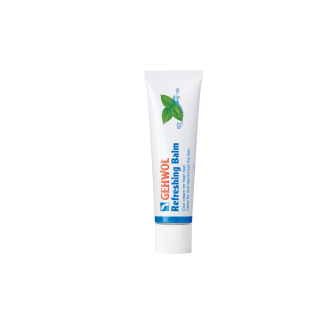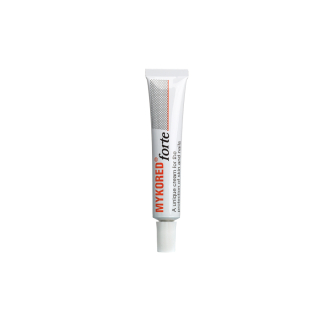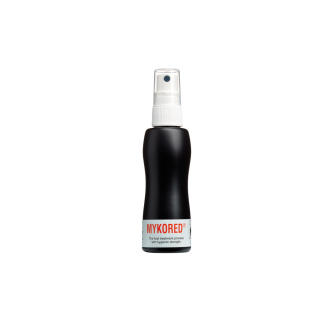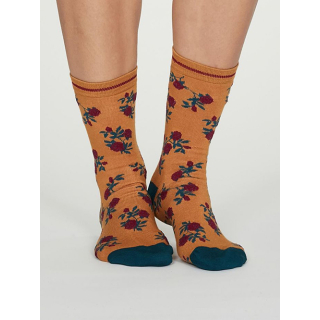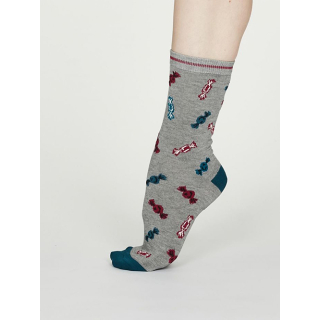Athletes foot
Athlete's foot is a fungal skin infection that usually begins between the toes. It commonly occurs in people whose feet have become very sweaty while confined within tight-fitting shoes. Find out what causes athlete’s foot and how to treat it.
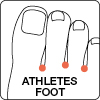

What is Athlete's Foot?
Athlete’s Foot is a fungal infection of the skin on your foot. If left untreated it can spread to other parts of your foot and nails. It can spread to your hands, groin and even to your face. This can be passed easily to other people through contact of the injected area.
Causes of Athlete’s Foot
Fungal infections thrive in dark, moist and airless environments, such as the areas between the toes. You are at more risk of a fungal infection if you frequently wear enclosed footwear, sweat heavily and share surfaces such as mats, linen and clothing with someone else who has a fungal infection.
Always protect your feet when walking in public areas such as locker rooms, saunas, swimming pools and communal baths and showers.
Symptoms of Athlete’s Foot
Common symptoms if you have Athlete’s Foot are:
- Blisters
- Itchiness, burning or stinging
- Inflamed skin that might appear faintly red, purple or grey
- Scaly, peeling or cracked skin between the toes or along the bottom of the foot.
Treatment for Athlete’s Foot
There are a number of ways to treat athlete’s foot including:
- Good Hygiene: To treat Athlete’s Foot, good hygiene is very important. You must wash your feet daily with soapy water, and then pat your feet dry (don’t rub them). Ensure to dry thoroughly in-between your toes.
- Don’t share socks, shoes or towels: Ensure not to share towels, socks and shoes, and to change your socks or hosiery everyday.
- Wear the right socks: Wear socks that are from natural products – cotton, bamboo, or wool rather than polyester or lycra. Always check the label when they say cotton rich as this may only be 55%. Where you really need 80% cotton or wool to help with sweating and reducing the chance of a fungal infection.
- Wear breathable shoes: It is also advised that you wear shoes that offer breathable materials. Look for natural fibres rather than man made and opt for shoes with leather tops to allow your feet to breathe. Wear sandals in the house rather than slippers especially if you have a sweatier type of skin. Change your shoes daily and don’t wear the same pair every day. After every wear of your shoes, allow them to dry out, spray with antifungal spray or powder.
- Use antifungal products: If you already have Athlete’s Foot apply anti-fungal cream, powder or spray to fight the fungal infection. The cream, powder or spray is to be applied for 2 weeks following the symptoms disappearing. Otherwise the fungal infection will return.
- Athlete’s foot powder should be applied with a very light dusting. Use a tissue to wipe away the excess. Powder can cause clogging of pores, in-between your toes if the excess isn’t removed it can increase the risk of the fungal infection not being treated.
Keep up the treatment program, even if you think the infection is gone as the fungus causing the problem in the first place can still be there for a long time after the discomfort has disappeared.
Here at Simply Feet you will find a number of skincare products to effectively treat fungal infections.
Seek professional help with a podiatrist if your symptoms aren’t resolving within 7 -14 days as it could be another condition e.g. psoriasis, eczema, dermatitis.
Frequently Asked Questions
What Will Happen If Athlete’s Foot Is Left Untreated?
If athlete's foot is left untreated, it can spread to other parts of the body, including the toenails, soles of the feet, and even the palms of the hands. It can also lead to more severe symptoms such as blistering, cracking, and peeling of the skin, as well as pain and discomfort when walking or wearing shoes.
Additionally, if the infection is not treated, it can be transmitted to other people through contact with contaminated surfaces or objects. In rare cases, it can lead to serious complications such as cellulitis (a bacterial infection of the skin and subcutaneous tissue) or even sepsis (a severe systemic infection). Therefore, it is important to seek treatment for athlete's foot as soon as possible to prevent these potential complications.
Can Athlete’s Foot Go Away On Its Own?
Athlete's foot can go away on its own in some cases, but it is generally recommended to seek treatment to prevent the infection from spreading or recurring. Without treatment, athlete's foot may persist or worsen, leading to additional symptoms such as cracking and peeling skin, blisters, or toenail fungus. It is important to keep the affected area clean and dry, and to avoid sharing towels, shoes, or other personal items with others to prevent the spread of the infection. We offer a range of products that are effective in treating athlete's foot and preventing future outbreaks.
Do I Have To Throw Away My Shoes And Socks If I Have Athlete’s Foot?
No, you do not have to throw away your shoes and socks if you have athlete's foot. However, it is important to thoroughly clean and disinfect your shoes and socks to prevent the infection from spreading. You can do this by washing them in hot water with a disinfectant detergent or soaking them in a solution of equal parts water and household bleach. It is also recommended to wear sandals or flip-flops until the infection has cleared up to allow your feet to breathe and reduce the risk of re-infection.

